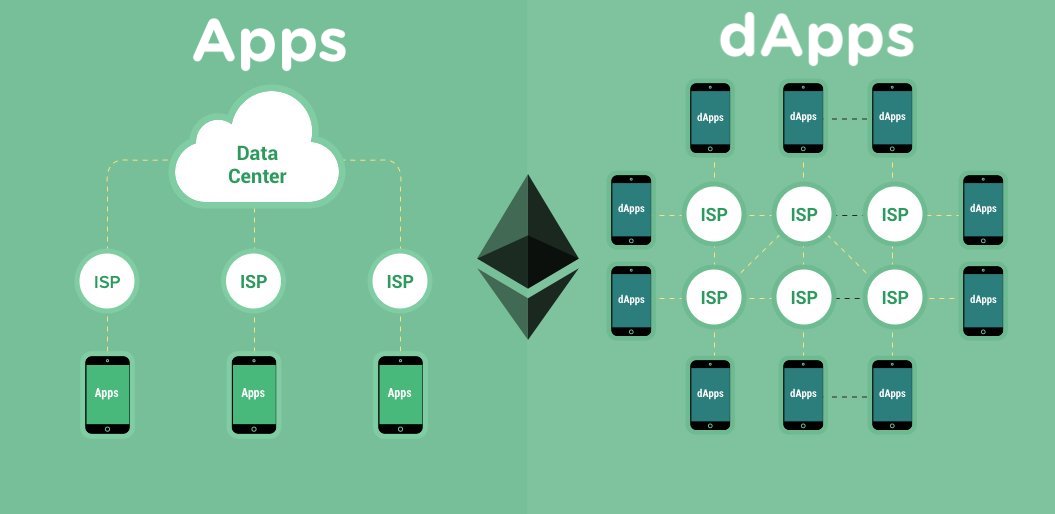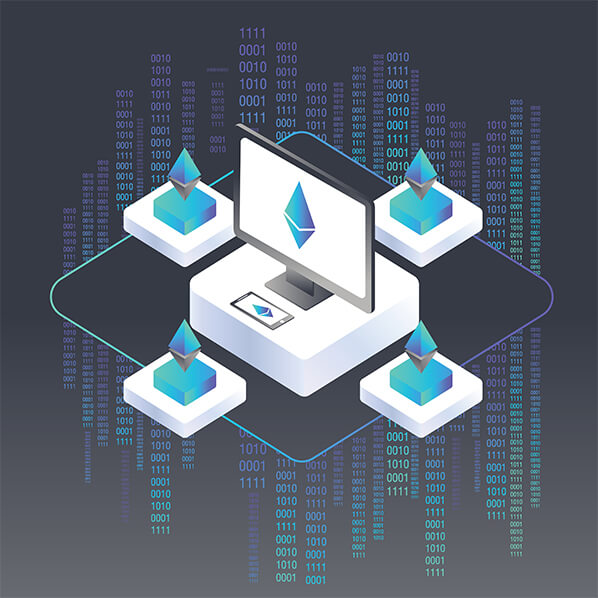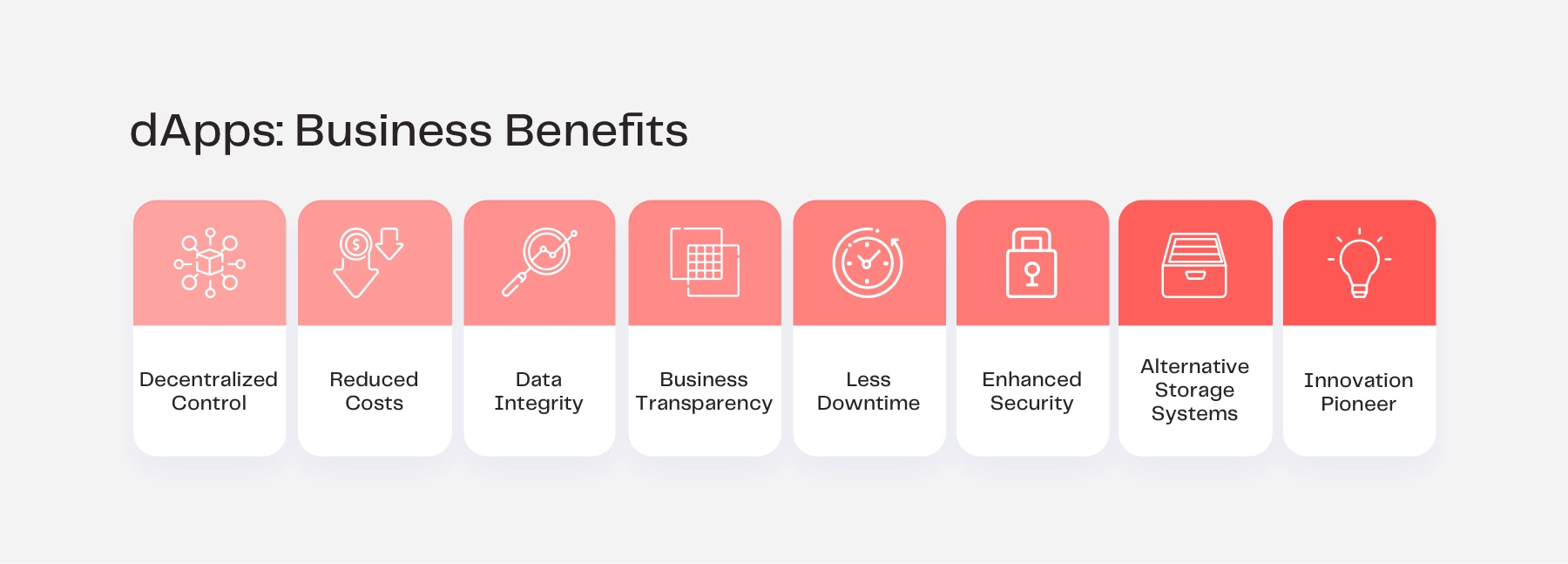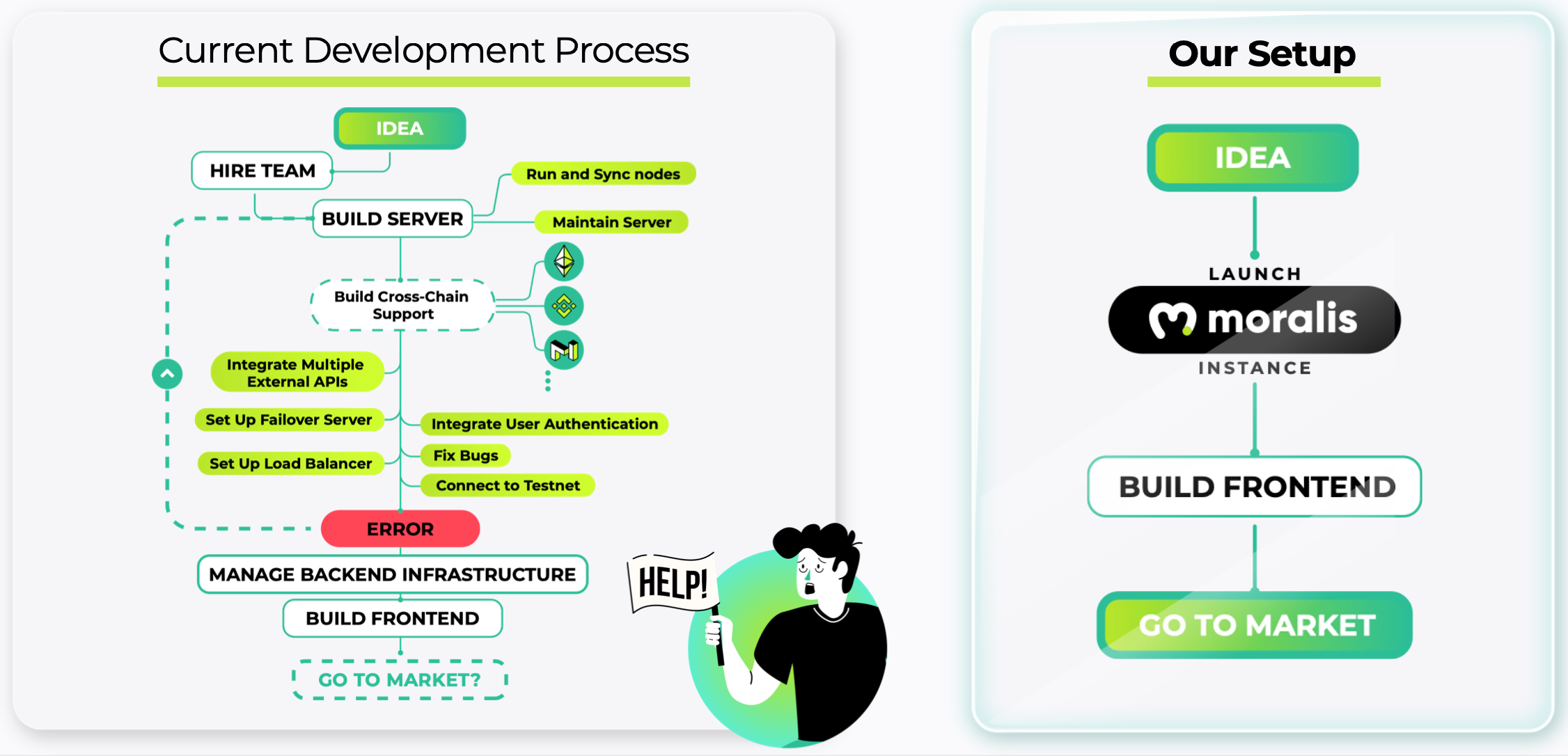Decentralized applications, or dApps, have exploded in popularity during the last year. However, it is still relatively difficult to build dApps from scratch. This is why we’ve set up this guide for how to build dApps quickly and easily. If you use a powerful Web3 backend infrastructure platform like Moralis, your dApp development time will be dramatically shortened. Read on for a breakdown of what dApps are, how to build dApps, and how to build decentralized applications with Moralis.
It has never been simpler to quickly build dApps and go to market rapidly than with Moralis. In this article, we’ll break down everything from the basics of what dApps are to how to build dApps in minutes (really). We’ll explain everything there’s to know about dApp development, what language are dApps written in, and how to build decentralized applications in this article. However, if you want to whet your appetite with an excellent video explaining some of the main parts of dApp development, check out the following video explaining Web3 app development.
What are dApps?
Before we get into the best practice details for speedy dApp development, let’s start with the basics; what are dApps? The simple answer is that the term ”dApps” is short for ”decentralized applications”. In essence, you can contrast decentralized applications, or ”dApps”, with normal applications, commonly known as ”apps”. On the surface, dApps and regular apps are very similar. Their graphical user interfaces can be identical, and casual end-users might not even understand whether they are using a dApp or a normal app. Why, then, are dApps being hailed as ”the next big thing”, and why is it hard to build dApps?
The big difference between decentralized applications and traditional applications comes on the backend side of things. Seeing as dApps are decentralized, their backend needs to ready to use decentralized protocols. Although there are many different dApps that all have varying degrees of decentralization, overall, you can answer the question ”what are dApps?” as applications that run on peer-to-peer (P2P) networks, like blockchains. Generally, dApps also employ smart contracts, which enable them to provide functionality without the need for an intermediary. At the moment, Ethereum is the most well-known smart contract platform, but there is also a variety of other alternatives out there. As such, the answer to ”what language are dApps written in?” varies, but often, the answer will be that dApps are effectively written in Solidity.

Those of you who have read previous articles on the Moralis blog will recognize that the description of ”what are dApps?” also fits for Web3 apps. In our ultimate guide to Web3, we outlined the impending shift from Web2 to Web3. To put it simply, one could say that this shift from Web2 to Web3 will also bring a similar shift from apps to dApps.
What is dApp Development?
Now that we can answer ”what are dApps”, let us dive into traditional dApp development and its issues. As the name implies, dApp development relates to how decentralized applications are built. Frontend dApp development is not much different from app development. The same UI guidelines apply, and you just need Web3.js. Traditionally speaking, quite few even know how to build the backend of dApps to begin with. This scarcity is partly why the average blockchain developer salary has risen so sharply in recent years. What’s more, traditional dApp development is time-consuming, resource-intensive, and generally cumbersome.
These dApp development issues essentially boil down to the nature of Web3 and decentralized applications. We’ve previously noted how Web3 promises a more decentralized web that solves some of the Internet’s inherent issues. Nevertheless, this backend revolution also means Web3 apps and dApps need to take capable but complex decentralized backends into account. Manually setting up, maintaining, and managing a Web3 backend was long seen as something prohibitively difficult. This is where Moralis comes in to bridge Web2 and Web3 development.

Moralis allows you to start building powerful, serverless dApps with just a single snippet of code. The whole dApp development field is still in its infancy, partly due to how inaccessible building dApps has been. Moralis turns this notion on its head by making dApp development dramatically easier and much more accessible. There is no reason all dApp developers need to reinvent the wheel every time they build dApps. Instead, they should simply use Moralis, which gives developers access to hugely capable Web3 backend features that would take developers months to set up on their own. When using Moralis, these months of preparations, development, trial, and error become mere minutes of integrating Moralis, which is fully plug-and-play ready.
What are the Benefits of dApps?
There are many reasons why dApps are being increasingly hailed as the applications of tomorrow. In fact, their many benefits are why developers have been getting into the dApp space, even before Moralis came along to make dApp development quick and easy. As such, let’s take a look at the benefits of dApps, and why you should start thinking about developing dApps of your own. Without any further ado, these are some of the many benefits of dApps as compared to conventional, centralized applications.
- No intermediaries – one of the central benefits brought by dApps is that they cut out the middleman, automating processes with trustless smart contracts.
- Open-source – the code underpinning dApps is generally open-source, meaning the codebase is open for review and, ideally, continuously improved as a result.
- No downtime – the decentralized nature of dApps means they do not have one point-of-failure, such as a hosting server, that can bring down the entire network.
- Censorship resistance – as dApps lack any single-point-of-failure and are not controlled by any central authority, it becomes extremely hard for someone to control or censor the network.

If a traditional application was able to offer just one of these advantages, it would be a game-changer. Seeing as all of these benefits are inherently built into dApps, it is easy to see why interest in how to build dApps is surging. Nevertheless, for the many previously mentioned reasons, building dApps from scratch is still relatively hard. Moralis makes dApp development just as easy as traditional app development while still giving you access to all the many benefits brought by dApps. Do you still think this sounds too good to be true? Just check out this guide for building a simple dApp in three minutes with Moralis!
What is Moralis?
It is likely already becoming clear to you that Moralis is the best answer to how to build dApps quickly and easily. Nonetheless, let us take a closer look at Moralis, so you can get a clear overview of Moralis’ different features. At its core, Moralis is a Web3 backend infrastructure platform for developers. Nevertheless, if you think this sounds too abstract, think about it this way; Moralis is how dApps should be built.
With Moralis, you get a Web3 backend infrastructure that allows you to focus on the frontend development side of things. Essentially, Moralis handles all the complex, under-the-hood Web3 stuff needed to make your dApps work. Additionally, Moralis is infinitely scalable – meaning your dApps will be able to scale effortlessly – and is fully managed. As such, you do not need to manually set up, manage or maintain the Web3 backend infrastructure. Moreover, Moralis comes with a long list of powerful features that would take weeks or months to implement on your own.

For example, Moralis supports native dApp authentication with well-known wallets such as MetaMask. The Moralis Speedy Nodes functionality effectively makes Moralis one of the most competitive blockchain node providers around for dApp development. As we’ve previously explained in our ”What is JSON?” article, Moralis also comes with native IPFS support. Furthermore, this isn’t even mentioning that Moralis is built for cross-chain compatibility, the Moralis NFT API, Moralis’ Deep Index API, Real-Time Alerts and Real-Time Database, and much, much more. Does this seem interesting to you? Be sure to sign up for Moralis for free today and check out all of these great features for building dApps easily and quickly. There’s no better way than Moralis to quickly and easily prototype, build, and deploy top-notch dApps!
Example – How to Build Blockchain dApps for Business from Scratch
Let us illustrate the dApp development process with a simple example. Imagine how to build blockchain dApps for business from scratch. If you truly intend to build your dApps from scratch, this means you will have to manually set up everything you require by yourself. First of all, you will likely need to assemble a team with extensive Web3 competence and hire these to even begin your project. The next step in our ”how to build blockchain dApps for business from scratch” example is to set up a server. This includes running and syncing nodes, as well as maintaining the server.
You will then need to get into the really complex stuff. Specifically, this relates to building cross-chain support into your app if you want to promote broad adoption. As a developer, you will likely not care about the underlying philosophies of different blockchains – you’ll just want to get your dApp into as many users’ hands as possible. As a result, you will need cross-chain compatibility. Moreover, when building your blockchain dApp for business from scratch rather than using Moralis, you will need to integrate multiple external APIs, integrate user authentication, set up a load balancer, fix bugs, set up a failover server, manually connect to testnets, and encounter your inevitable development errors. Worst case, these errors can send you back to square one.

As such, it’s easy to see why building your own dApps from the ground up is probably a bad idea. The arguably most persuasive answer to ”how to build blockchain dApps for business from scratch” is that you don’t. Instead, you should simply opt to use Moralis. When building dApps with Moralis, you do not need to do any of this. Instead, all this functionality is there, just waiting for you to use it.
How to Build dApps Quickly and Easily – Summary
If you build your dApps with Moralis, you don’t have to create everything from scratch. Instead, you can stand on the shoulders of giants and utilize an existing Web3 backend infrastructure that is flexible enough to allow you to build virtually whatever you’ve got in mind. At this point, the sky is really the limit for you, as you can develop and deploy dApps that would take months to develop yourself within just a matter of hours or days using Moralis. If you want to get some more inspiration for how to build dApps quickly and easily with Moralis, check out the following video with simple examples using Moralis.
So, in summary, Moralis is the clear answer for how to build dApps quickly and easily. The streamlined process means that you can take dApps to market on unprecedented timescales. Best of all, you are still getting in on Moralis early! Moralis left beta just earlier this month with the release of the Moralis Enlightenment Update, which aims to take dApp development out of the Dark Ages.
Nevertheless, Moralis has already got a long list of high-profile partnerships under its belt. Just to name a few, these include Polygon (formerly Matic), TrustSwap, 1inch, Moonbeam, Polkamon, Chainlink as a sponsor, and many, many others. Be sure to check out the rest of the Moralis blog if you want to get more technical in-depth articles. The Moralis blog is updated with completely free in-depth guides on a daily basis. For example, check out our previous deep-dives on, e.g., Geth nodes, or our breakdown of tools such as Hardhat, which also help simplify the development process of dApps. Kickstart your dApp development today with Moralis!
